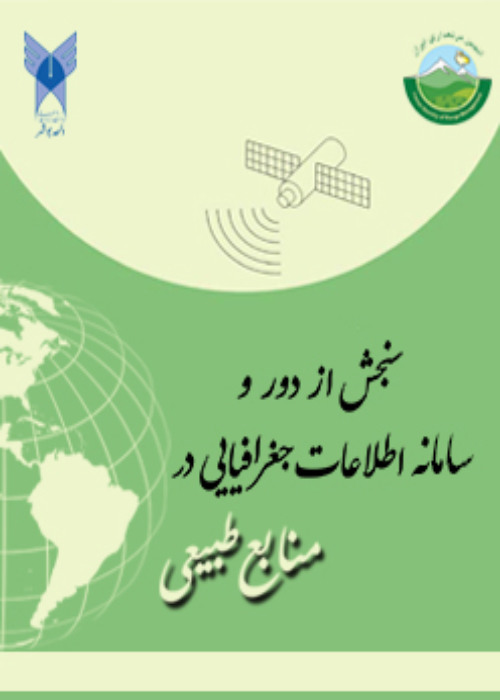Identification and evaluation of geotourism potential areas with sustainable development approach (Case study: mount Damavand areas in Haraz watershed)
Background and Objective:
Volcanic Mount Damavand has unique landscapes and special geomorphological phenomena, wildlife diversity, vegetation, and unique climatic conditions and is one of the most important tourist destinations in Mazandaran province. Therefore, the protection of these unique reserves, especially geological phenomena that are the result of millions of year’s global evolution in this region, is important. Therefore, comprehensive national and international planning based on the principles of sustainable development is essential for the continuation of this world heritage. By using valuable tools such as GIS, it is possible to identify prone areas to geotourism development for sustainable development in the region and then apply the evaluation and optimal management. In addition to scientific values, geocomposites have many conservation, cultural, aesthetic, social and economic values. For the comprehensive management of watersheds, it is necessary to consider all the natural and human aspects affecting geotourism. In this study, in order to identify the potential of geotourism, an analytic hierarchy process (AHP) has been used with the GIS.
Materials and Methods :
Mount Damavand with a height of 5672 meters is located in northern Iran. It is the highest peak in Iran and the Middle East, as well as the highest semi-active volcanic peak in Asia. Damavand is a stratified and semi-active volcanic mountain that was mainly formed during the fourth geological period called the Quaternary and Holocene eras. From the point of view of country divisions, it is located in Amol city of Mazandaran province. Its altitude is 5672 meters above sea level, the average annual rainfall is 540 mm and it is mainly in the form of snow. The climate of this part of the basin is semi-humid climate according to the Koppen method and cold semi-humid climate according to the Ambrege method. In order to determine the effective indices in identifying the potential areas for geotourism development, the study of criteria is divided into two categories of effective criteria and restrictive development. Layers of development obstacles include; rivers and main roads, side roads and inter-rural roads. The effective layers studied along with the relative weight obtained from the analysis of the questionnaire were considered to superimpose the layers with a specific weight for each layer. The results of completing the questionnaire by the audience, to determine the relative weight, information layers were formed in the GIS environment. In this study, using geographic information system (GIS) tools and analytic hierarchy process (AHP) method, the weighting of effective criteria susceptible areas with geotourism development capability within a radius of 20 km of mount Damavand were performed.
Results and Discussion:
The criteria inconsistency rate is less than 0.1, there is no need to reconsider the judgments. According to the final results obtained from overlaying effective layers in the development of geotourism by the Weighted Overlay function in GIS software, the study area with an area of 1256 square kilometres, after subtracting the restrictive areas, is divided into five classes; very inappropriate, unsuitable, medium, suitable and very suitable. The results showed, that the regions were classified into 5 categories: very inappropriate (1.34%), unsuitable (19.11%), medium (56.44%), suitable (20.94%) and very suitable (2.16%). then, after the field visit, 40 Alternatives were identified and examined in terms of the importance of development potential in the region. Evaluation of 40 Alternatives shows that 25, 40 and 35% of the alternatives have very good, appropriate and average potential, respectively. The results show that most of the susceptible areas with geotourism development capability, are located in the east and southeast of Mount Damavand. This can be caused by the density of various facilities, including villages, cities, roads and rivers, and so on. The high potential areas are more in the north, centre to the southeast of the protected area that has vegetation and forest, water resources and high geomorphological values and low potential areas are more in South and west is the range. This can be seen in the present study. Also, most of the area has medium to high potential, which indicates a good potential of the area.
Conclusion:
One of the main reasons for the lack of integration in determining areas with geotourism potential is the lack of comprehensive and codified scientific criteria and indices. Geotourism, as one of the sub-branches of tourism, is a way to explain various geological and geomorphological concepts, it can be used as an industry for the construction and development of economic geology. In this study, in order to determine the susceptible areas with geotourism development capability with a view to the sustainable development of the region, the studied criteria were determined according to the availability of their information. These layers include; geology, distance from rivers, city, villages, communication roads, altitude, slope and aspect, rainfall and temperature as effective layers and road and river maps were considered as a constraint layer. In different studies, according to the availability of information of each layer in the study area and according to the purpose of the study, the layer of effective criteria and obstacles are different. After a field survey and identifying 40 alternatives, the results of overlaying the identified alternatives with the final potential map showed 35% of the alternatives in areas with very good potential, 40% of the options in areas with good potential, and 25% of the alternatives has medium development potential, respectively. This method is used to exploit natural resources and prepare tourism, welfare maps and can be a key step for the sustainable development of regions, and can provide a key step for the sustainable development of areas prone to tourism with different goals.
- حق عضویت دریافتی صرف حمایت از نشریات عضو و نگهداری، تکمیل و توسعه مگیران میشود.
- پرداخت حق اشتراک و دانلود مقالات اجازه بازنشر آن در سایر رسانههای چاپی و دیجیتال را به کاربر نمیدهد.



